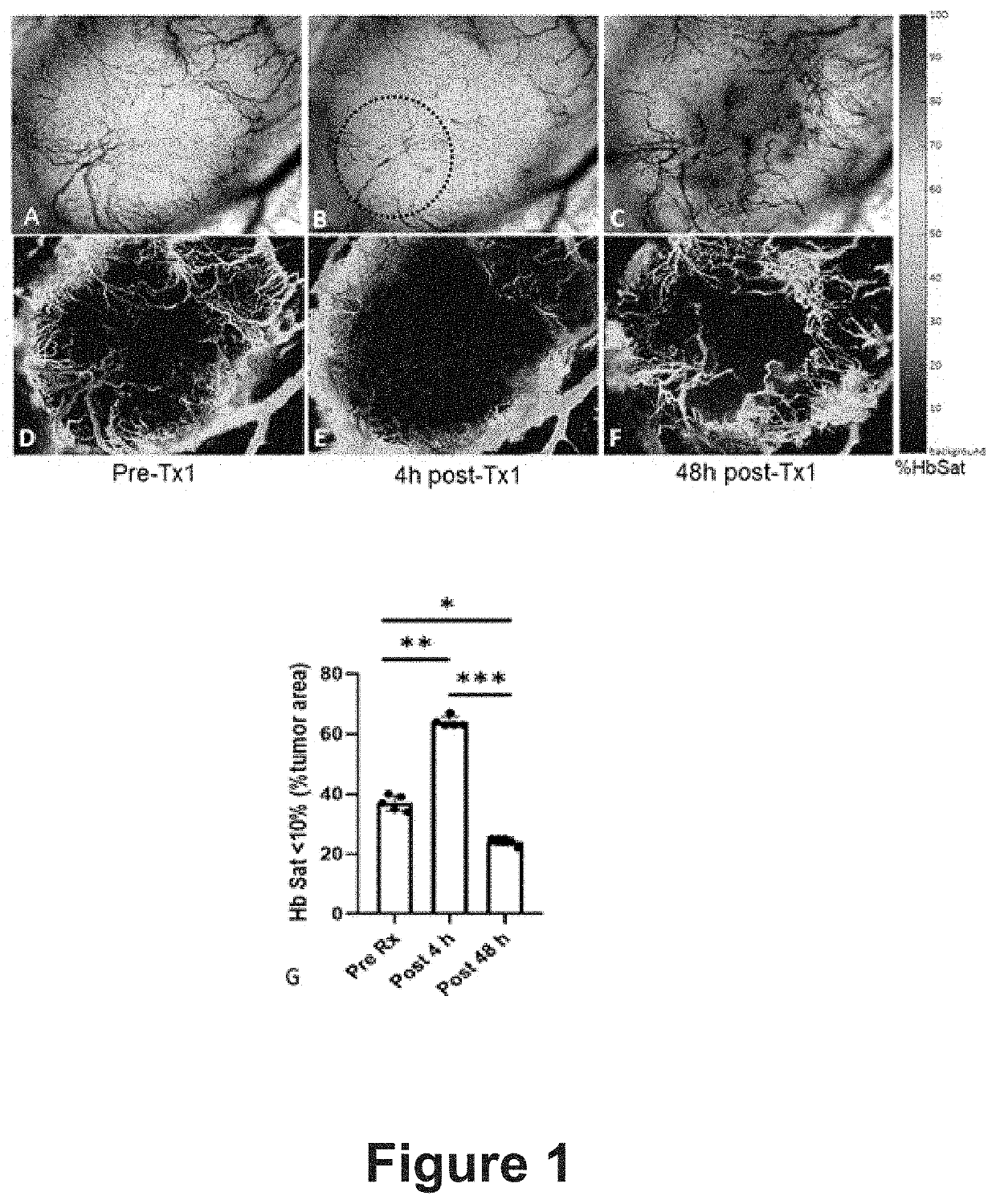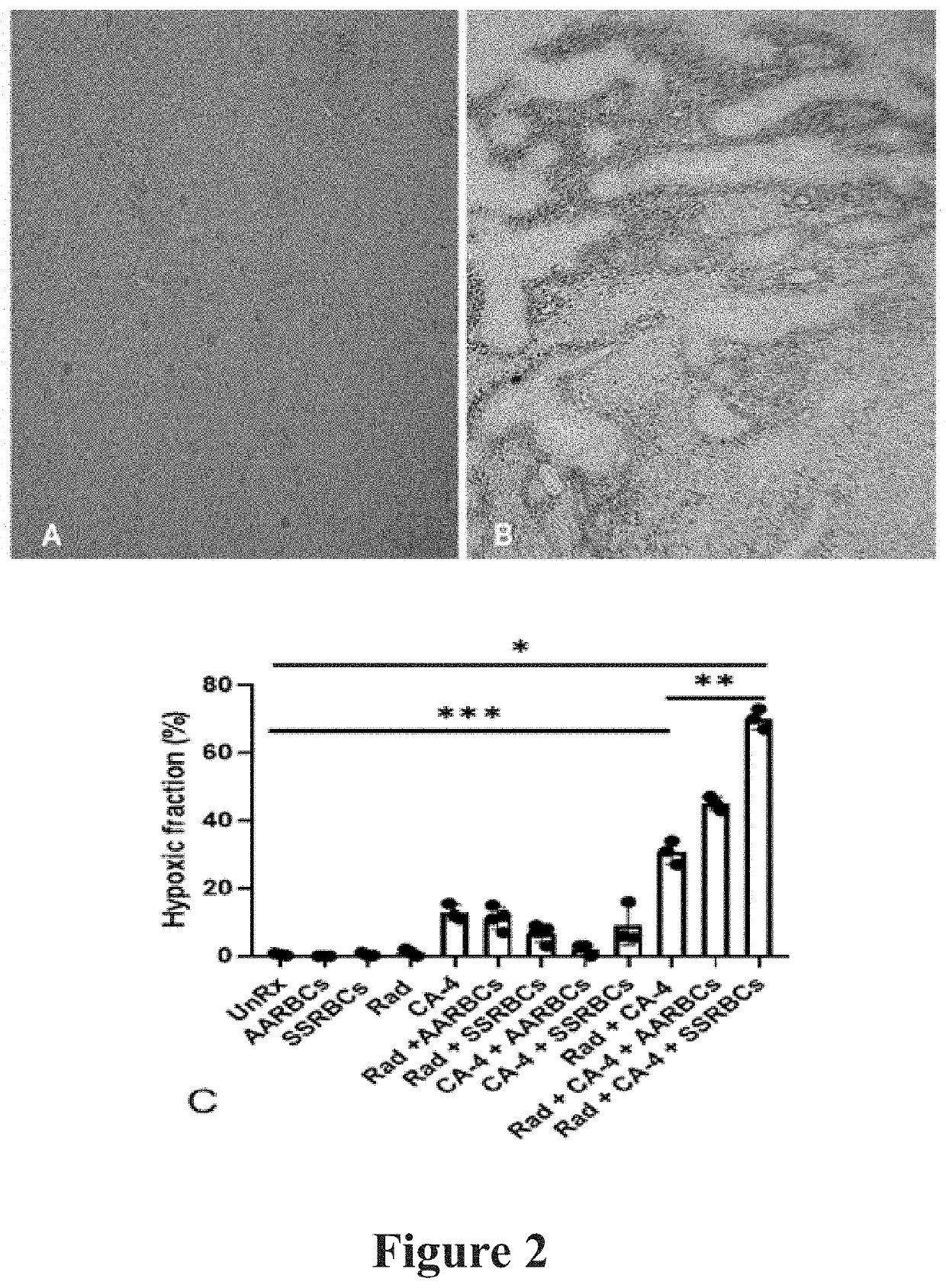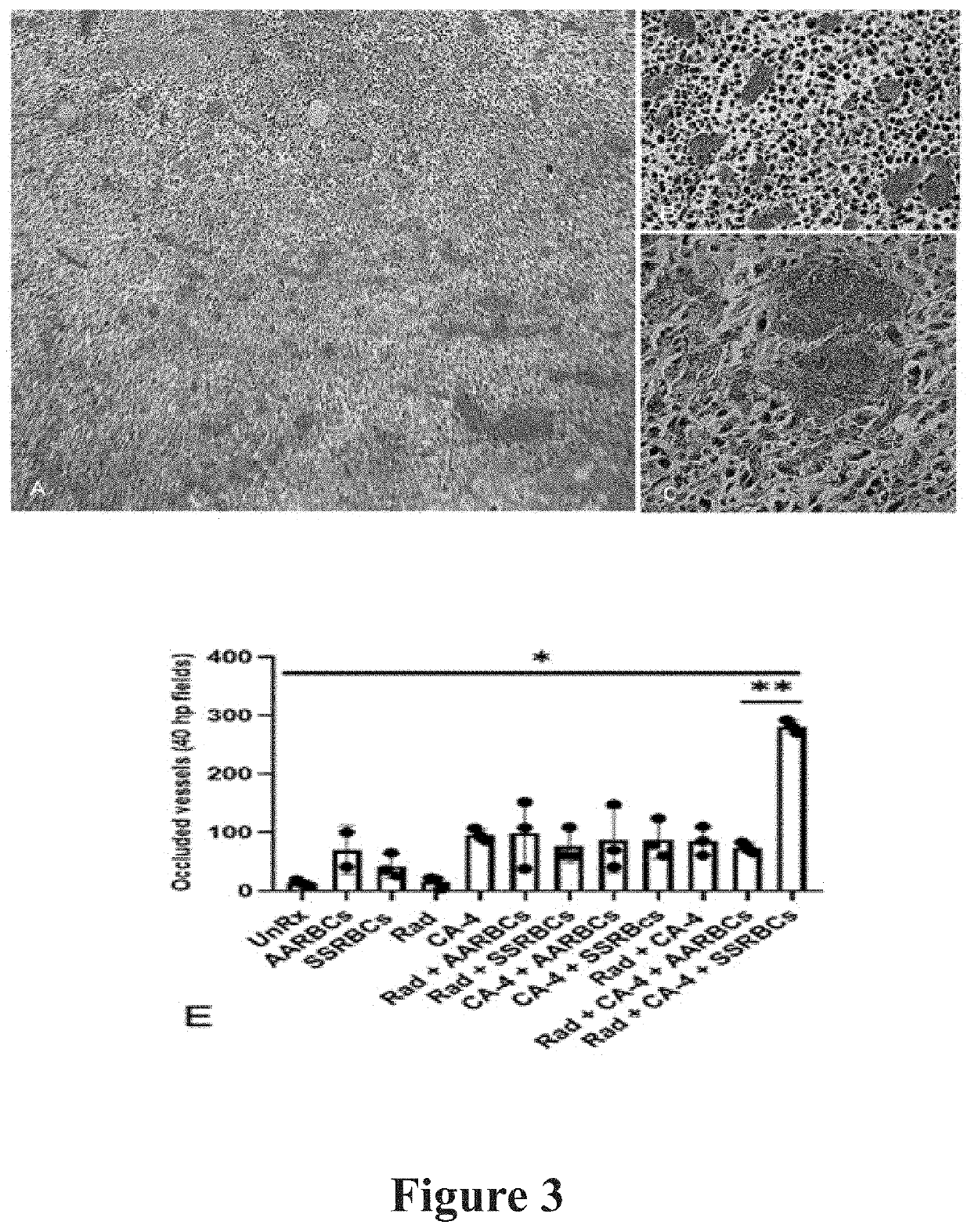Compositions and Methods for Treatment of Cancer
a cancer and composition technology, applied in the field of compositions and methods for cancer treatment, can solve the problems of inducing ca-4 and failing to eliminate peripheral tumor foci, and achieve the effects of reducing the degree of focal tumor hypoxia, and reducing the number of tumors
- Summary
- Abstract
- Description
- Claims
- Application Information
AI Technical Summary
Benefits of technology
Problems solved by technology
Method used
Image
Examples
example 1
t of VDA Ability to Induce Hypoxia in Caki-1 and Lewis Lung Tumors
[0147]Using hyperspectral imaging we assessed the spatial and kinetic effects of CA-4 on the development and recovery of tumor hypoxia, vascular collapse and parenchymal injury in the Caki-1 tumor. In FIG. 1, representative of two experiments, hyperspectral imaging of the untreated Caki-1 tumor displayed an area of 38% with a Hb saturation of Proc Natl Acad Sci USA. 1980; 77(9):5487-5491). Under these conditions SSRBCs also assume the sickle morphology and upregulate intrinsic adhesion receptors resulting in SSRBC aggregation and vaso-occlusion. The narrow time dependency for induction of tumor vascular hypoxia and vessel and collapse by these agents indicated that to optimize the vaso-occlusive effect of SSRBCs both SSRBCs and CA-4 would need to be administered at the same time.
example 2
d Sickle Cells Induce a Vaso-Occlusive Surge in Response to CA-4 and Sublethal Radiation Resulting in Broadly Propagated Tumor Hypoxia and Infarction Engulfing the Core and Treatment-Resistant Tumor Rim
[0148]Because of their biocompatibility with humanized sickle cell knockin (SSKI) mice we carried out additional studies of tumor hypoxia with CA-4 alone and combined with SSRBCs and sublethal radiation (SR) using the venerable pimidazole hypoxia marker in C57BL / 6 mice bearing established Lewis lung carcinoma (LLC) (FIG. 2 A-C). Intracellular pimidazole is activated in vivo by deoxygenation in a range of 0-10% mm Hg similar to that noted after CA-4 administration to the Caki-1 tumors (Rofstad E K, Int J Radiat Biol. 1999; 75(11):1377-1393).
[0149]Next, we determined whether SSRBCs transfusion together with CA-4 could induce vaso-occlusion and hypoxia in the microvessels of established LLC. The LLC tumor in C57BL / 6 mice was selected for its biocompatibility with humanized sickle cell kn...
example 3
Sickle Cell Infusions Induce Regression of Established LLC when Combined with CA-4 and Sublethal Radiation (SR)
[0150]Having shown that SSRBC infusions together with CA-4 and tumor SR could produce disseminated tumor vaso-occlusion, hypoxia and infarction encompassing the tumor rim we next determined whether repeated treatment of established lung tumors with the triple modality regimen could induce significant tumor regressions. Mice with established Lewis lung tumors were treated with SR to the tumor on day 12 and 24 hours later (day 13) received CA-4 along with infusions of SSRBCs obtained from SSKI mice or humans with sickle cell anemia. SSRBC infusion and CA-4 were repeated on days 15 and 18 and mice were sacrificed on day 22. Results showed that mouse or human SSRBCs coupled with CA-4 and SR produced significant arrest of LLC growth on day 22 (FIG. 5A). By contrast, mice similarly treated with RBCs from AAKI mice or a normal human donor showed tumor progression (FIG. 5A). Combin...
PUM
| Property | Measurement | Unit |
|---|---|---|
| Volume | aaaaa | aaaaa |
| Volume | aaaaa | aaaaa |
| Dimensionless property | aaaaa | aaaaa |
Abstract
Description
Claims
Application Information
 Login to View More
Login to View More - R&D
- Intellectual Property
- Life Sciences
- Materials
- Tech Scout
- Unparalleled Data Quality
- Higher Quality Content
- 60% Fewer Hallucinations
Browse by: Latest US Patents, China's latest patents, Technical Efficacy Thesaurus, Application Domain, Technology Topic, Popular Technical Reports.
© 2025 PatSnap. All rights reserved.Legal|Privacy policy|Modern Slavery Act Transparency Statement|Sitemap|About US| Contact US: help@patsnap.com



